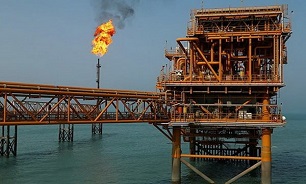Iran to Replace Foreign Firms with Domestic Companies to Develop Oil, Gas Fields
 The National Iranian Oil Company (NIOC) is set to grant the development project of the South Pars oil layer, in the Persian Gulf, to a domestic company, NIOC Director of Integrated Planning Karim Zobeidi said on Thursday.
The National Iranian Oil Company (NIOC) is set to grant the development project of the South Pars oil layer, in the Persian Gulf, to a domestic company, NIOC Director of Integrated Planning Karim Zobeidi said on Thursday.
“The cooperation will be under Iran’s new model of oil contracts, known as Iran Petroleum Contract (IPC),” he added.
“Negotiations are also underway with domestic companies for the development of other fields such as Yaran and Sohrab,” Zobeidi recounted.
Noting that the NIOC has already signed IPC-based contracts with domestic contractors for developing and increase the recovery factor of various oil fields such as Cheshmeh-Khosh, West and East Paydar, Sepehr, and Jofair, he said, “with these contracts going operational the production capacity of the country's oil fields will increase significantly.”
Iran introduced its “Iran Petroleum Contract” in 2016 and replaced it with old buyback models in order to attract more foreign investors into the country’s oil and gas sectors.
In early January, the managing director of Pars Oil and Gas Company (POGC), which is in charge of developing Iran’s South Pars gas field in the Persian Gulf, had said that this company is in talks with a number of Iranian companies on the development of the oil layer of the field.
Making the remarks in a press conference, Mohammad Meshkinfam said the negotiations were confidential.
South Pars is the world’s largest gas field, but it also has significant oil reserves which Iran shares with Qatar across from the Persian Gulf.
Iran started pumping oil from the oil layer in March 2017 with the initial production of 5,000 barrels per day (bpd) which currently stands at 25,000 bpd according to Meshkinfam.
The development of South Pars oil layer is still at the pilot phase, but the country sees positive prospects for 150,000 bpd of recovery in the currently producing reservoir.
Officials have said the development of the layer is a complex process requiring integrated development.
“We are looking for a competent contractor who can make a commitment to production. Iranian companies are interested in getting money and digging wells. We are looking for cumulative production,” former deputy head of the National Iranian Oil Company (NIOC) Qolamreza Manouchehri said.
The NIOC was in talks with Denmark’s Maersk Group for the second phase development of the South Pars oil layer, then negotiations with the Danish company was stopped after Maersk sold its oil and gas division to French oil major Total in August 2017.
Earlier this month, The Petropars Operation & Management Company (POMC) announced that Iranian authorities had awarded it with a deal to develop phase 14 of the South Pars, including work on launch, start-up, operation, performance test and first production.
The contract comes amid US sanctions on Iran’s oil and gas industry which has affected the government’s ability to engage with major international companies to develop its energy sector.
Iran’s development plans for South Pars hit a snag last summer when France’s Total withdrew from a contract to expand phase 11 of the gas field under increasing pressure from the United States.
Iran has managed to expand other phases of the gas field, which is shared with neighboring Qatar, on its own, putting billions of dollars in investment and using the expertise existing inside the country.
Late last month, it was announced that the first de-mercaptanization unit of South Pars Phase 2 and 3 Refinery has so far gained 78 percent progress and will come on stream by the end of the current Iranian calendar year to March 2020.
According to the Pars Oil and Gas Company (POGC), Sirous Peykar, the project manager of the unit, said that the project had progressed 97 percent in the engineering section, 92 percent in data-x-items procurement section and 60% in its construction section.
Construction of the unit began in 2017 and most of the boilers, towers and thermal convertors have been installed so far.
The plant is being built with 80,000 b/d of gas condensate de-mercaptanization capacity.
This is the first de-mercaptanization unit in POGC.
Iran has sought to increase its daily production at oil and gas fields despite sanctions imposed by the United States which restricts Tehran’s ability for export.
Iranian Oil Minister Bijan Namdar Zanganeh had said earlier this year that Iran’s gas production at South Pars had already exceeded 21.5 billion feet (610 million cubic meters) per day, adding that Iran’s share of daily production at the field had dwarfed that of Qatar.
He also said last week that Tehran was negotiating with China to sort out the country’s role in South Pars phase 11, a project where the China National Petroleum Corp (CNPC) has been accused of foot-dragging.
The CNPC has held an 80 percent stake in the project since France’s Total withdrew last summer under US pressure.
Back in mid-December, Head of Exploration at the National Iranian Oil Company (NIOC) Seyed Saleh Hendi said US’ unilateral sanctions against Tehran have led Iran to self-sufficiency in producing equipment for oil and gas production.
In 2014, Managing Director of the National Iranian Tanker Company (NITC) Ali Akbar Safayee announced that the country has attained self-sufficiency in the construction of offshore oil platforms despite the sanctions imposed by the West.
Message end/
